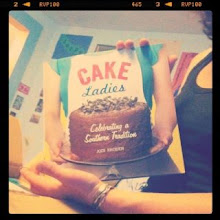Without further ado: the first featured favorite cookbook has got to be (duh):

The Joy of Cooking was originally written by Irma S. Rombauer (with revisions carried out by her children and grandchildren, all Rombauers or Beckers). She self-published her cookbook in 1931, when she was a struggling single mom. Now she has left a cookbook empire to her children and grand children. (I think I met one of her great-grand-children at a party in my kitchen about 7 years ago. It was a kid who went to Warren Wilson. I was so in awe, man.)
Anyway, the Joy of Cooking.
C'mon. Its the bible. The Joy of Cooking (or just "Joy" as it is referred to in culinary circles) is simply the best, most comprehensive, most clear and well researched recipe book there is. Its also written in a very prim and proper, loveable-matronly-aristocrat voice, which somehow I love. When I used to live in Athens, Ga, my roommates and I used to entertain ourselves by doing dramatic readings of Joy recipes. My favorite is the Crepes Suzette recipe, which recounts the legend of the invention of the dessert, which like many good ideas, started by the thing the chef was originally trying to make ending in complete disaster. I won't recount the entire story here, but let me just say, its high drama, and it ends with: "and the dish was a triumph!" The point is, when relevant, Joy includes thorough background information on the recipes, their origins, and how they work and why. If you've ever tried to write a recipe, like a true how-to, you know it is not as easy as it looks, but Joy manages to communicate methods with clarity and levity.
I've accumulated three versions of Joy: the 1943 "wartime edition" (pictured) that I inherited from my Husband's Great-Aunt, one from 1975 that I stole from my mom, and the most recently updated edition, which came out in 2006 (a Christmas gift from my husband- thanks baby!). They are all great in their own way. The WWII one has lots of fancy drink recipes, but also lots of frugal recipes and "more with less" inspirations for the home economy. In the forward Irma promises to help us "make palatable dishes with simple means and lift everyday cooking out of the commonplace." swoon. The 70's version has lots of info on killing and dressing game (useful for us possom- and squirrel- eating Southerners), as well as many many options for making that best loved and overused convenience food of the 60's and 70's: the casserole. The 2006 edition is beautiful, huge, and features more international and vegetarian recipes than ever before. One can never read all the information in Joy. There are always new recipes to be tried. When you are standing in front of your refrigerator, trying to figure out how to make dinner with a half cup of leftover black beans, some sausage, a can of water chestnuts and a cassava root, Joy will tell you how.
Um, and that's the end of my feature on the Joy of Cooking.
So now for the Bibliomancy! I will now flip through the pages of each edition with my eyes closed and randomly choose a recipe or passage that will have some kind of deep occult meaning for all of us:
1943: "The question of how to cook apple butter is a moot point. Some cooks cook it very slowly, others prefer a quick heat."
1975: " Sauce Chaud-Froid is so called because it begins as a heated sauce and is served as a cold one."
2006: "The more pungent rums from the French islands of Guadeloupe and Martinique can achieve great subtlety and complexity when well aged and can be served like fine brandy in a snifter. Don't waste these fine rums in mixed drinks."
Hm, interesting. Obviously our spiritual lesson for the day is that discernment, balance, and listening to our inner wisdom will lead us to greater enjoyment in our lives.
the end.
Oh wait, PS, you should also check out Bake and Destroy Natalie's final project for her zombie class in college: The Joy of Cooking Humans









3 comments:
Hey, jodi, you have now set a very high bar for dinner expectations next time I'm in asheville. I will be expecting some oldblackbeansausageroot stew in massive servings when I get there. What I really mean is I will be coming into town on the 13th, but what I really mean is I love your blog.
-Gracie
i, too, begin heated then end up served cold.
as a long time fan of 'joy' who missed out on the interpretive kitchen readings, i must say that this is the greatest post i've read since i was introduced to the blogosphere.
anyway, i haven't owned a copy for years. you tried to give me one recently. one good steal deserves another, i'm taking the one you took from your momma next time i see you.
fair enough.
Post a Comment